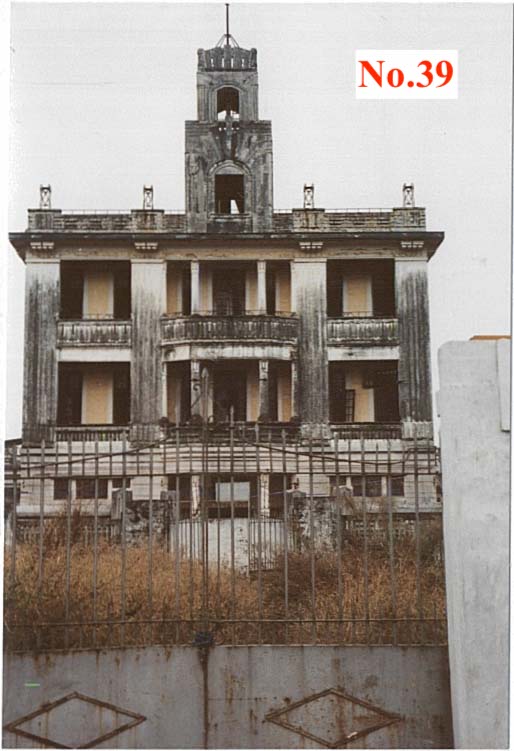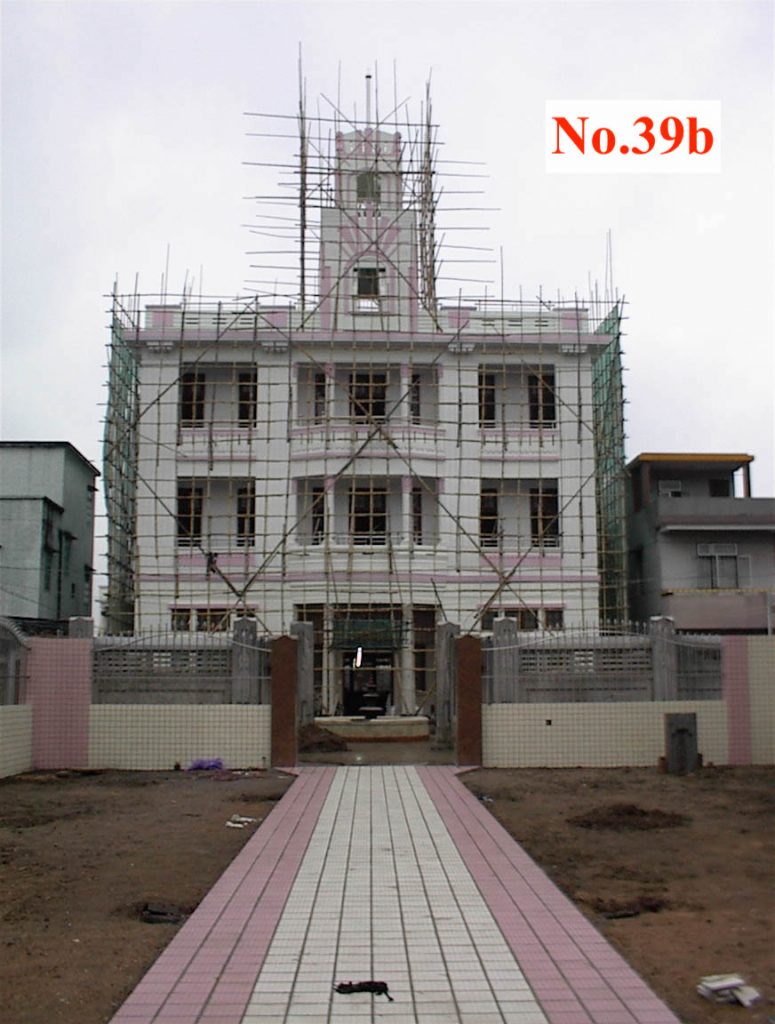
In what is now called South District, close to the fast encroaching high rises of Zhongshan City (中山市) is the impressive mansion of the Kwok 郭 (Guo) family. (For the Ma family of Sincere see No. 36.) Now fully restored both inside and out from its neglected state pictured here in 1999, this building is still owned by the family that established and owns the famous international Wing On Company (永安). The story of the Kwok brothers, who left their south China village of Zhuxiuyuan (竹秀園) in the late 19th century to work in Sydney before founding their department store in Hong Kong and then Shanghai in the early 20th century, is well known.[1] Less well known are the links they maintained with their home village with a Wing On branch in the nearby county capital of Shekki (石岐 – now Zhongshan City) such as a Church and donations to establish in the home village a substantial school that still operates today.

However rural China in the years before 1949 was a dangerous place for those with wealth, and bandits and kidnappings were common (see No. 14 and No. 25). The Kwok family built the mansion pictured in the village but then, as now, did not live there. Instead it was used for special occasions and stands as a symbol of the family’s ongoing link with the qiaoxiang (僑鄉) or home district. A link with overseas decedents the administrators of the Kwok home village – as in other villages – do everything they can to encourage (see No. 33 and No. 36).

Not that the relationship with either China or Australia has been easy for the Kwok family. Despite many members being Australian born they were subjected to the restrictions, discriminations and procedures of the White Australia policy (see No. 1 and No. 40). While the evidence is indirect, the fact that the Wing On branch in Sydney remained at the level of a small trader while those of Hong Kong and Shanghai grew into major international businesses is a telling consequence of Australia’s effort to remain white.
In China too not all was easy with the main Wing On businesses in Shanghai within the Japanese Concession. The Japanese invasion and the Chinese civil war split the Kwok family, as it did all Chinese society, and some members of this large family were accused of collaboration while others were high in the administration of the new post-1949 Chinese government. As a result many members of the Kwok family today reside in nether Australia or China but in the United States.
See also: The China-Australia Heritage Corridor Project
[1] See for example, Yen Ching-hwang, “Wing On and the Kwok Brothers: a case study of pre-war Chinese entrepreneurs” in Kerrie L. MacPherson, Asian Department Stores, Curzon, 1998, pp.34-47.

